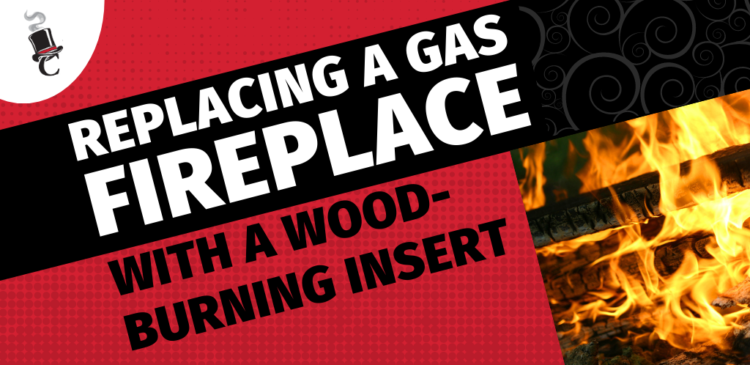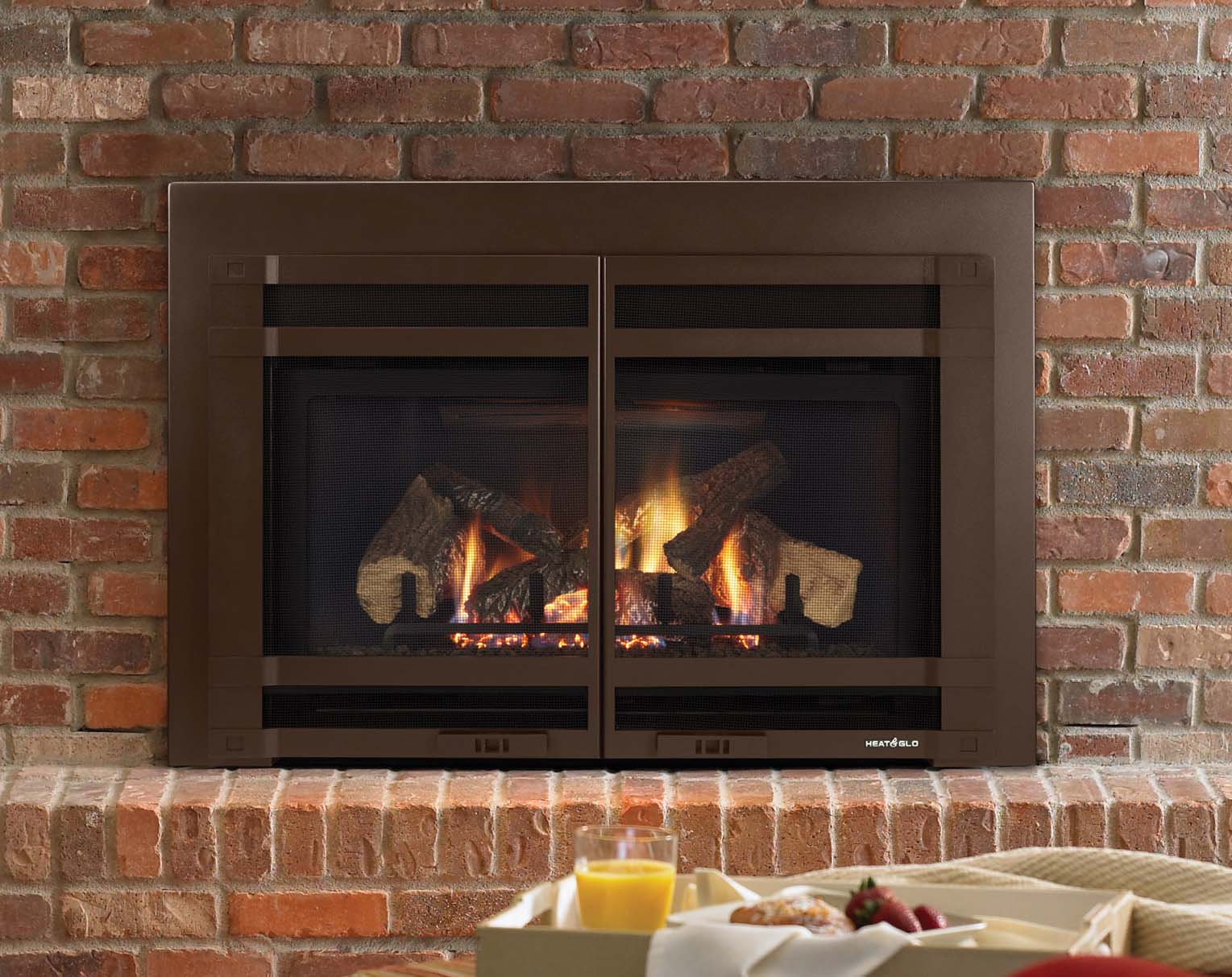Gas Fireplace Insert Problems
While gas fireplace inserts are generally regarded as efficient and low-maintenance heating solutions, they can occasionally present certain problems that homeowners need to be aware of. One of the most common issues is poor ignition or failure to light. This problem can occur for various reasons, such as a malfunctioning igniter, low gas pressure, or a clogged pilot light. If the igniter isn’t sparking properly or there’s a blockage, the gas won’t ignite, leaving the fireplace inoperable. Dirty or corroded components can exacerbate these issues, as residue buildup over time prevents the smooth operation of essential parts. Regular maintenance, including cleaning and inspecting the igniter and pilot light, can help prevent this problem. However, if ignition problems persist, professional assistance may be required to assess the gas lines or internal parts of the insert.

Another frequent issue that homeowners encounter with gas fireplace inserts is unusual or unpleasant odors when the unit is running. While a slight odor when first turning on the fireplace is normal, especially if the unit hasn’t been used in a while, persistent odors could indicate a more serious problem. These smells might be the result of dust or debris burning off, or, more concerningly, a gas leak. If the odor is strong or smells like rotten eggs (a telltale sign of a gas leak), immediate action is required, including turning off the fireplace, venting the area, and contacting the gas company. Additionally, if there’s a persistent smell of burning or smoke, it may point to poor ventilation or a malfunction in the unit’s exhaust system, both of which should be promptly addressed by a professional to avoid potential health hazards.

Inconsistent heat output or inefficient performance is another problem that can arise with gas fireplace inserts. These units are typically designed to distribute heat evenly, but if the insert is not heating the room properly, it could be due to several factors. Improperly sized inserts, for instance, may not provide adequate heat for the space, while clogged burners or a faulty blower fan can reduce the efficiency of heat output. Additionally, the venting system plays a critical role in maintaining the fireplace’s efficiency. If there is a blockage in the vent or chimney, or if the vent is not properly sealed, it can lead to heat loss or even dangerous back-drafting of fumes into the home. Regularly inspecting and cleaning the vents, as well as ensuring the insert is properly sized for the room, can mitigate many of these efficiency problems.

Last, gas fireplace inserts can sometimes produce unusual noises during operation. While a low-level whooshing sound is typical when the gas is flowing, rattling, clanking, or banging noises are not. These sounds may be caused by loose components, such as a poorly secured blower fan, which can create vibrations as the unit heats up. In some cases, the expansion and contraction of metal parts due to the high heat can also lead to clicking or popping sounds, which, while not necessarily dangerous, can be annoying. If these noises are persistent or seem to be getting worse, it’s best to have the insert inspected by a technician, as loose or damaged parts could eventually lead to more serious issues. Addressing these problems early not only ensures a quieter, more pleasant operation but also extends the lifespan of the unit.

Replacing a Gas Fireplace with a Wood-Burning Insert – Chimney Sweeps, Fireplace Repairs

Gas Fireplace Insert vs Wood Burning Installation

What Size Gas Fireplace Insert Do I Need – Fireplace Guide by Linda

Gas Fireplace Maintenance Tips You Can Do Today

Does your fireplace suck? It doesn’t have to!

Gas Fireplace Insert Replacement Parts – Mriya.net

How to Remove a Fireplace Insert

Remove Gas Fireplace Insert

GAS INSERT or GAS FIREPLACE (Which one do I actually need? Will it heat?)

Most Efficient Gas Fireplace Insert Reviews – Fireplace Guide by Linda

Related Posts:
- Cheap Fireplace Inserts Wood Burning
- Wood Burning Fireplace Insert Panels
- Electric Fireplace Insert Crackling Sound
- Fireplace Insert Problems
- Fireplace Insert Faceplate
- Small Fireplace Inserts for Gas
- Electric Fireplace Insert for Wood Burning Fireplace
- Fireplace Inserts Long Island
- Outdoor Wood Burning Fireplace Insert
- The Allure Of A Non-Working Fireplace Insert: Aesthetics And Efficiency In Harmony
Gas fireplace inserts are a popular choice for homeowners looking to upgrade their existing fireplace or add a new one to their home. These inserts offer many benefits, such as increased efficiency, convenience, and aesthetics. However, like any appliance, gas fireplace inserts can experience problems that may require troubleshooting and repair. In this guide, we will discuss common gas fireplace insert problems, their causes, and how to address them.
Benefits of Gas Fireplace Inserts:
One of the main benefits of gas fireplace inserts is their efficiency. These inserts are designed to deliver more heat into your living space compared to traditional wood-burning fireplaces. This can help reduce your heating costs and make your home more comfortable during the colder months.
Another benefit of gas fireplace inserts is convenience. With just the flip of a switch, you can enjoy a cozy fire without the hassle of lighting and maintaining a wood fire. Gas inserts also produce less mess and smoke, making them a cleaner option for indoor use.
Gas fireplace inserts also offer versatility in terms of design and installation. They come in a variety of styles and sizes to suit different preferences and spaces. You can choose from traditional or modern designs to complement your home décor.
Additionally, gas fireplace inserts are environmentally friendly compared to wood-burning fireplaces. They produce fewer emissions and pollutants, which can contribute to better air quality in your home and reduce your carbon footprint.
Pros and Cons:
While there are many benefits to using gas fireplace inserts, there are also some drawbacks to consider. One potential drawback is the initial cost of purchasing and installing a gas insert, which may be higher than that of a traditional wood-burning fireplace.
Another downside is the reliance on natural gas or propane for fuel, which can lead to higher utility bills over time. It’s important to factor in the ongoing costs of fuel when considering a gas fireplace insert.
Maintenance and repair costs can also be higher for gas fireplace inserts compared to wood-burning fireplaces. Regular cleaning and inspection are necessary to ensure safe operation, and any repairs should be done by a professional technician.
Furthermore, some homeowners may prefer the ambiance and aroma of a wood-burning fire over the convenience of a gas insert. It’s important to weigh the pros and cons of each type of fireplace before making a decision.
Common Gas Fireplace Insert Problems:
Pilot Light Issues: One common problem with gas fireplace inserts is issues with the pilot light. If the pilot light won’t stay lit or is flickering, it could be due to a dirty pilot assembly or faulty thermocouple. Cleaning the pilot assembly or replacing the thermocouple may resolve this issue.
No Heat Output: If your gas fireplace insert is not producing enough heat, it may be due to a clogged burner or blocked venting system. Check for any obstructions and clean out any debris that may be affecting airflow.
Strange Odors: If you notice unusual odors coming from your gas fireplace insert, it could indicate a gas leak or combustion problem. Turn off the unit immediately and contact a professional technician to inspect and repair any issues.
Ignition Problems: If you have trouble getting your gas fireplace insert to ignite or stay lit, it could be due to issues with the ignition system or control valve. Consult your owner’s manual for troubleshooting tips or contact a technician for assistance.
Common Mistakes to Avoid:
Neglecting Regular Maintenance: One common mistake homeowners make is neglecting regular maintenance for their gas fireplace insert. Proper cleaning and inspection are essential for safe operation and can help prevent costly repairs down the line.
DIY Repairs: Another mistake to avoid is attempting DIY repairs on your gas fireplace insert without proper training or experience. Gas appliances can be dangerous if mishandled, so it’s best to leave repairs to qualified technicians.
Ignoring Warning Signs: It’s important not to ignore any warning signs or unusual behavior from your gas fireplace insert. Addressing problems promptly can prevent further damage and ensure the safety of your home.
Improper Installation: Make sure your gas fireplace insert is installed correctly by a professional technician according to manufacturer guidelines. Improper installation can lead to performance issues and safety hazards.
How often should I have my gas fireplace insert serviced?
Regular servicing is recommended at least once a year by a qualified technician to ensure safe operation and optimal performance.
Can I convert my wood-burning fireplace into a gas fireplace insert?
Yes, it is possible to convert an existing wood-burning fireplace into a gas insert with the help of a professional installer.
Why is my gas fireplace insert producing smoke?
Smoke production could indicate incomplete combustion or ventilation issues that need to be addressed by a technician.
Are there any safety precautions I should take when using my gas fireplace insert?
It’s important to follow manufacturer guidelines for safe operation, including proper ventilation and using approved fuel sources.
While gas fireplace inserts offer many benefits in terms of efficiency, convenience, and aesthetics, they can experience problems that require attention from homeowners or professional technicians.
It’s essential to address any issues promptly, avoid common mistakes like neglecting maintenance or attempting DIY repairs, and follow safety precautions for safe operation.
By staying informed about common problems with gas fireplace inserts and knowing how to troubleshoot them effectively, you can enjoy cozy fires in your home without worry. Remember to always consult your owner’s manual for specific troubleshooting tips and contact a professional technician if you are unsure about how to address any issues with your gas fireplace insert. With proper care and maintenance, your gas fireplace insert can provide years of warmth and enjoyment for you and your family. If you’re experiencing any of the common problems mentioned in this guide, it’s essential to address them promptly to ensure the safety and efficiency of your gas fireplace insert. Remember to schedule regular maintenance with a qualified technician, avoid DIY repairs, and follow safety precautions when using your gas fireplace insert.
By being proactive in caring for your gas fireplace insert and addressing any issues as soon as they arise, you can continue to enjoy the many benefits that these appliances offer. Whether you’re looking to upgrade your existing fireplace or add a new one to your home, gas fireplace inserts can provide a cozy and convenient heating solution for your living space. With proper care and attention, your gas fireplace insert can enhance the comfort and ambiance of your home for years to come. If you have any concerns or questions about your gas fireplace insert, don’t hesitate to reach out to a professional technician for assistance. They can help diagnose and repair any issues you may be experiencing with your gas fireplace insert. Remember to prioritize safety and proper maintenance to ensure the longevity and efficiency of your appliance.